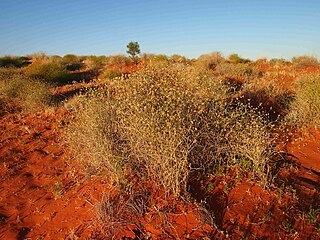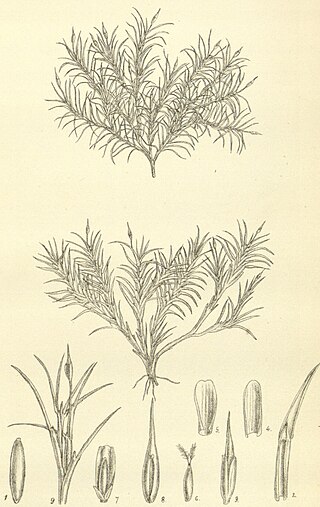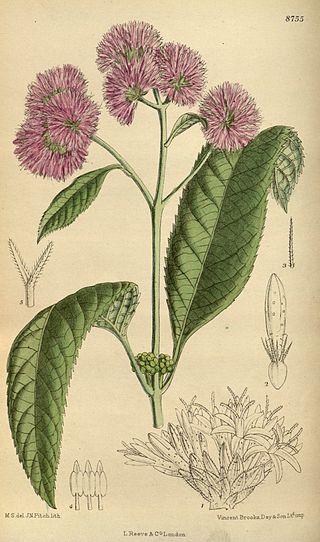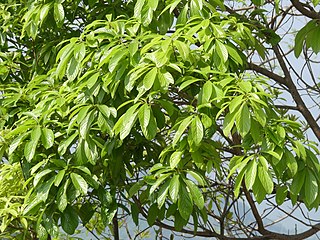
George Bentham was an English botanist, described by the weed botanist Duane Isely as "the premier systematic botanist of the nineteenth century". Born into a distinguished family, he initially studied law, but had a fascination with botany from an early age, which he soon pursued, becoming president of the Linnaean Society in 1861, and a fellow of the Royal Society in 1862. He was the author of a number of important botanical works, particularly flora. He is best known for his taxonomic classification of plants in collaboration with Joseph Dalton Hooker, his Genera Plantarum (1862–1883). He died in London in 1884.

Luina, commonly called silverback, is a small genus of perennial shrubs in the groundsel tribe within the sunflower family.

Zygochloa is a genus of desert plants in the grass family known only from Australia. The only known species is Zygochloa paradoxa, commonly known as sandhill canegrass. It occurs in extremely arid areas such as the Simpson Desert.

Icones Plantarum is an extensive series of published volumes of botanical illustration, initiated by Sir William Jackson Hooker. The Latin name of the work means "Illustrations of Plants". The illustrations are drawn from herbarium specimens of Hooker's herbarium, and subsequently the herbarium of Kew Gardens. Hooker was the author of the first ten volumes, produced 1837–1854. His son, Sir Joseph Dalton Hooker, was responsible for Volumes XI-XIX. Daniel Oliver was the editor of Volumes XX-XXIV. His successor was William Turner Thiselton-Dyer. The series now comprises forty volumes.

Aciachne is a genus of Latin American plants in the grass family.
Lepidostephium is a genus of South African flowering plants in the family Asteraceae. It is native to the Cape Provinces and KwaZulu-Natal.

Cremanthodium is a large genus of flowering plants in the daisy family.
Azorella filamentosa is a species of flowering plant in the genus Azorella existing in Chile and the Falkland Islands.
Heterachne is a genus of Australian plants in the grass family.
Desmanthodium is a genus of flowering plants in the family Asteraceae.
Mniodes is a genus of South American flowering plants in the tribe Gnaphalieae within the family Asteraceae.
Ondetia is a genus of flowering plants in the tribe Inuleae within the family Asteraceae.
Stachycephalum is a genus of plants in the family Asteraceae.

Bothriocline is a genus of flowering plants in the family Asteraceae. They are native to tropical Africa and some islands of the Indian Ocean. They are hairy annual and perennial herbs with purple or mauve flowers.
Chiliocephalum is a genus of Ethiopian flowering plants in the family Asteraceae.
Axiniphyllum is a genus of flowering plants in the family Asteraceae.

Berberis gracilipes is a shrub in the family Berberidaceae, first described in 1887. It is endemic to China, native to the Sichuan and Yunnan Provinces.

Phoebe hainesiana is a species of tree in the family Lauraceae, native to India. It is the state tree of Manipur.

Triglochin calcitrapa is a species of flowering plant in the family Juncaginaceae, first described by William Jackson Hooker in 1848, and native to south-west Western Australia.








